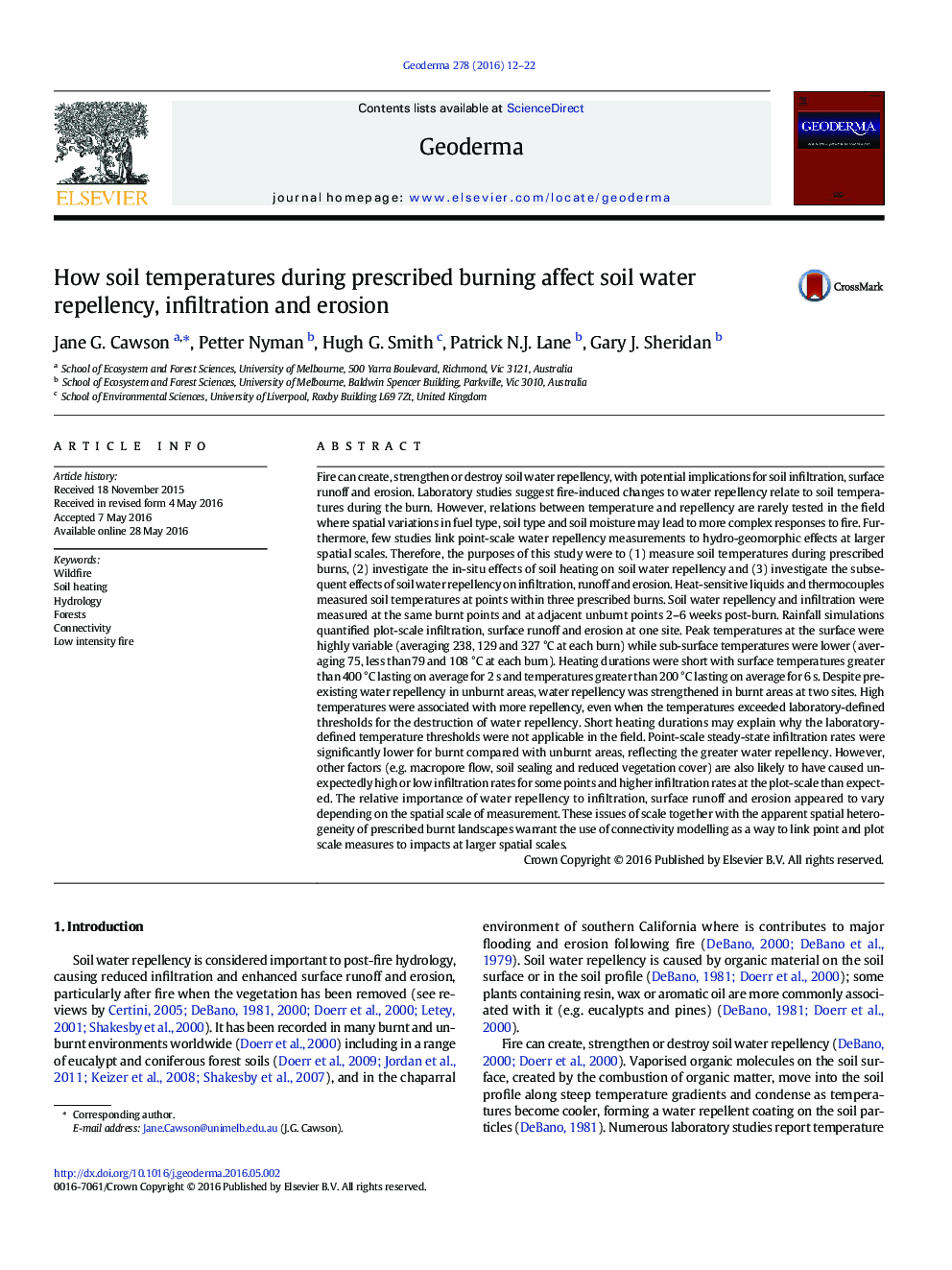| کد مقاله | کد نشریه | سال انتشار | مقاله انگلیسی | نسخه تمام متن |
|---|---|---|---|---|
| 4572890 | 1629439 | 2016 | 11 صفحه PDF | دانلود رایگان |
• Surface temperatures were variable (averaging 238, 129, 327 °C at each burn).
• Heating durations were short (averaging 6 s for > 200 °C at the surface).
• High temperatures were associated with more water repellency, lower infiltration.
• Low intensity fire has heterogeneous hydrological and erosion impacts.
• Connectivity modelling is needed link point scale measures to larger scale impacts.
Fire can create, strengthen or destroy soil water repellency, with potential implications for soil infiltration, surface runoff and erosion. Laboratory studies suggest fire-induced changes to water repellency relate to soil temperatures during the burn. However, relations between temperature and repellency are rarely tested in the field where spatial variations in fuel type, soil type and soil moisture may lead to more complex responses to fire. Furthermore, few studies link point-scale water repellency measurements to hydro-geomorphic effects at larger spatial scales. Therefore, the purposes of this study were to (1) measure soil temperatures during prescribed burns, (2) investigate the in-situ effects of soil heating on soil water repellency and (3) investigate the subsequent effects of soil water repellency on infiltration, runoff and erosion. Heat-sensitive liquids and thermocouples measured soil temperatures at points within three prescribed burns. Soil water repellency and infiltration were measured at the same burnt points and at adjacent unburnt points 2–6 weeks post-burn. Rainfall simulations quantified plot-scale infiltration, surface runoff and erosion at one site. Peak temperatures at the surface were highly variable (averaging 238, 129 and 327 °C at each burn) while sub-surface temperatures were lower (averaging 75, less than 79 and 108 °C at each burn). Heating durations were short with surface temperatures greater than 400 °C lasting on average for 2 s and temperatures greater than 200 °C lasting on average for 6 s. Despite pre-existing water repellency in unburnt areas, water repellency was strengthened in burnt areas at two sites. High temperatures were associated with more repellency, even when the temperatures exceeded laboratory-defined thresholds for the destruction of water repellency. Short heating durations may explain why the laboratory-defined temperature thresholds were not applicable in the field. Point-scale steady-state infiltration rates were significantly lower for burnt compared with unburnt areas, reflecting the greater water repellency. However, other factors (e.g. macropore flow, soil sealing and reduced vegetation cover) are also likely to have caused unexpectedly high or low infiltration rates for some points and higher infiltration rates at the plot-scale than expected. The relative importance of water repellency to infiltration, surface runoff and erosion appeared to vary depending on the spatial scale of measurement. These issues of scale together with the apparent spatial heterogeneity of prescribed burnt landscapes warrant the use of connectivity modelling as a way to link point and plot scale measures to impacts at larger spatial scales.
Journal: Geoderma - Volume 278, 15 September 2016, Pages 12–22
